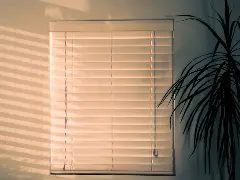

Have you ever seen spilling water from the under-sink cabinet but ignored it? If yes, you made a big mistake. Your garbage disposal is the main culprit. A leaky garbage disposal may convert your dishwashing area to a water pool with constantly dripping water and could even spoil the wooden cabinet.
If your cupboard space is storing fruits, vegetables, or anything else, you will get a foul smell and debris. You have to be a spy to trace this leakage and discover which part of your disposal is making your expensive disposal worthless.
Let’s see how you can fix a leaky garbage disposal without any noise.
How to trace garbage disposal leakage:
First of all, before touching any part of the disposal, you have to make sure that it is the prime leakage point. You can easily figure this out. What you have to do is block the sinkhole by inserting a stopper in it and open the tab. Fill the sink to about half and add a few drops of food color in it. Now place a clean white towel on the sink parts listed below to see from where the towel gets colored.
When you figure it out, work on it, and your disposal will be fine.
Loose or old sink flange
So, if your disposal is showing leakage from the very top of the unit where the sink and disposal are connected, it means it is the sink flange that is the leakage culprit. There could be two reasons for leakage from this point, either the plumber’s putty that is present inbetween the pipe and flange is weak, or the mounting bolts are loose.
To deal with the first scenario, take putty in your hand and make a rope of about a half inch and place it in the flange region by unscrewing the bolts. If your problem gets solved, well done. If not, you need to unbolt the garbage disposal and directly tighten the flange. After this, your problem should be solved.
Old worn gasket
If you have discovered that water is dripping from the top, but flange and putty are new, then the culprit is a defective gasket.
If the unit is many years old and you never addressed its problems, it indicates that the gasket is worn out and began to drip. Secondly, if you rarely use your disposal, the gasket can dry up and cause leakage. In both cases, you need to change the gasket. So, unplug the unit and detach after unscrewing it properly. Remove the flange, unmount the assembly and reach to the gasket. Now, take the old worn gasket out and drop a new one at its place. Attach the mounting assembly carefully and then turn the unit ON to check any leakage.
Loose or damaged discharge pipe
Another notorious area to cause leakage from your garbage disposal is the discharge pipe. It is the bottom pipe that is attaching the drain and the sink. There is a chance that it got loose when sorting things from the cabinet or for any other reason. Check it properly, and if you feel loose connections, mount firmly. But if the pipe is leaking because of damage, you may need a new discharge pipe to stop the leakage.
Dishwasher connections
The garbage disposal may leak from other parts like the dishwasher hose. The dishwasher is connected to the drainpipe that may be loose and result in leakage. In this case, you can secure the connections to get rid of the leakage or just changed the hose, and your disposal will stop dripping.
Faulty reset button
In slightly old models of garbage disposals, there is a reset button that ensures the disposal unit is on and off. If you have traced that it is faulty and causing leakage, you need to get a new disposal as replacing the reset button will give you no benefit.
Cracked unit
Having a cracked unit is the worst case ever. If you found the flange, gasket, all pipes, and connections perfectly alright, swab the unit surface, and you will get why your garbage disposal is leaking. The body of the garbage disposal unit is damaged, and you cannot fix this without replacing the whole system. Buy a new garbage disposal and install it, but to avoid future damage, change the place of stored items near the unit, so nothing accidentally bumps and cracks the garbage disposal.








Comments
Post a Comment